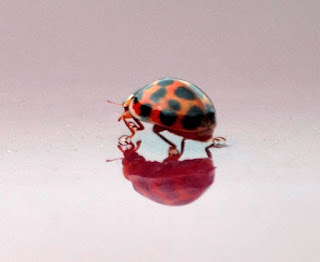Driving from Cornwall to Kent recently, I noted a couple of interesting place names. Both are Somerset villages.
Queen Camel is a strange name. ancestry.co,uk gives us this which, IMO, verges on gibberish:
Camel Name Meaning
English and French: from the word denoting the animal, Norman French came(i)l, Latin camelus, classical Greek kamelos. The surname may have arisen from a nickname denoting a clumsy or ill-tempered person. It may also be a habitational name for someone who lived at a house with a sign depicting a camel. English: from an assimilated pronunciation of Campbell. English: possibly a habitational name from Queen Camel and West Camel in Somerset, Camel(le) in Domesday Book (1086), possibly a Celtic name from canto- ‘border’, ‘district’ and mel ‘bare hill’. Probably an Americanized spelling of Kamel.
King Henry III's wife Eleanor of Provence apparently owned land in the area in the 13th century and perhaps she's the Queen in the name. If so, why not Queen's Camel? Or Camel Queen?
John Leland, a renowned 16th century English historian, apparently believed that the village was the site of King Arthur's final battle. Wasn't Arthur a legend? Could this be the origin of fake news? However, it appears that the village is in the electoral ward of Camelot. Who knew? I passed quickly by, in case I met any ill-tempered people. Or camels.
Compton Paucefoot is even more odd. The only thing I found about Pauncefoot was Wikipedia telling us of "a Norman knight called Pauncefote ('Fat-bellied')" but there's nothing I could discover to corroborate that. There is also a Bentley Pauncefoot in Worcestershire so maybe quite a few fat-bellied knights roamed the English countryside in medieval times. A Compton is thought to refer to a farmstead in a narrow valley and it seems there are lots of those in this part of the world: Compton Martin, Compton Dundon, Compton Dando and Compton Bishop are all in Somerset.
I grew up reading about and following the exploits of the great Middlesex and England cricketer Denis Compton. Anyone as old as me will remember his exuberant, dashing and fleet-footed batting. He was the Mikhail Baryshnikov of cricket. He scored 5,807 runs (18 centuries) in 78 Test matches for England at an average of 50.1. In all first class matches he scored 38,942 runs (123 centuries) at an average of 51.0. Anyone with a knowledge of cricket will know that these are outstanding figures. He was also a very serviceable left arm spinner, available as an option when the regular bowlers were struggling to take wickets. As was common in the 1930s and 1940s, many full-time cricketers played cricket in the summer and football in the winter. Compton did so and won a League title and FA Cup winners medal with Arsenal. Argentina has a reasonable cricket team so maybe you'll see Lionel Messi turning out for them in between belting in goals for his new club.
Compton was a Player. That seems an odd thing to say but, until 1962, there were two categories of cricketer in England. The Players were the professionals and their names were shown on the scorecards with their initials following their surname, e.g Compton D.C.S. The Gentlemen were amateurs and their initials preceded their surname, as in M.J.K. Smith (himself a double international for England at cricket and rugby union).
Denis had a brother, Leslie, who also played for Middlesex (although not for England) at cricket and Arsenal at football - with two caps for England. As I recall, he was what is known these days as a "no nonsense" centre half. Meaning basically "you might get the ball past me; you might get yourself past me, but certainly not both".
Those were the days.
Speaking of strange place names, any guesses at the origins of Cuckoo-Down-Lane, a footpath in Whitstable in Kent? I walked along it and saw no cuckoos, down or otherwise.











